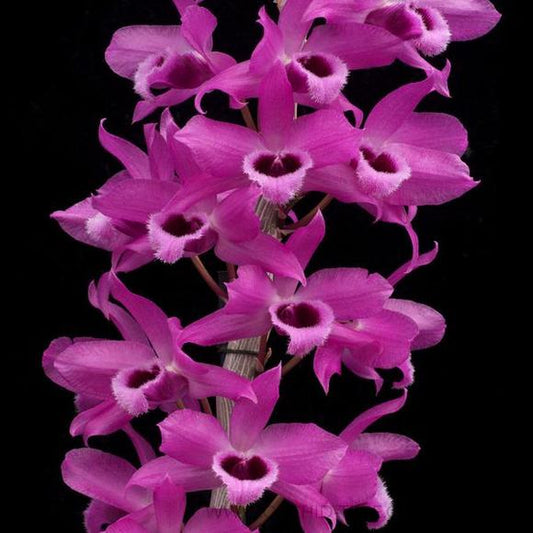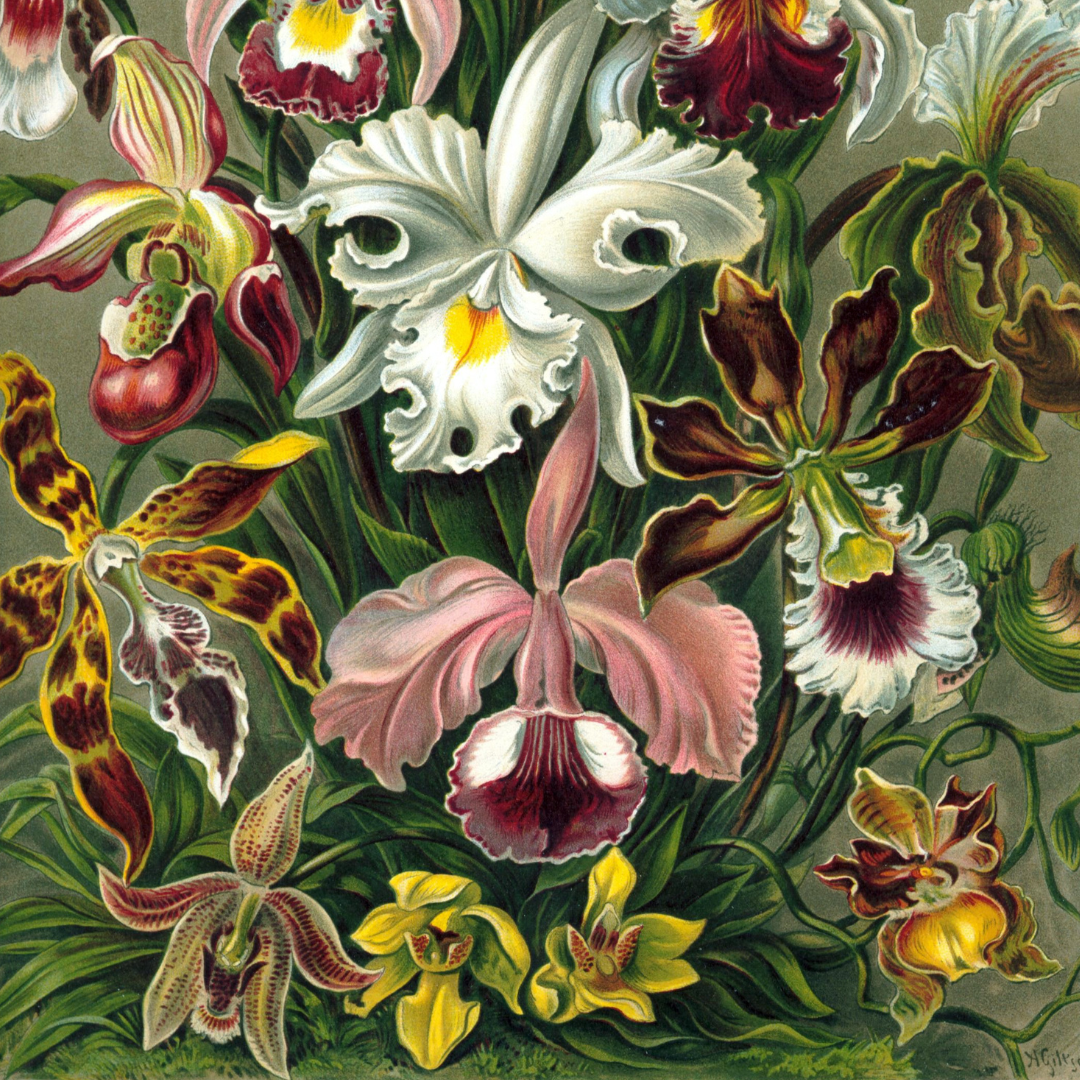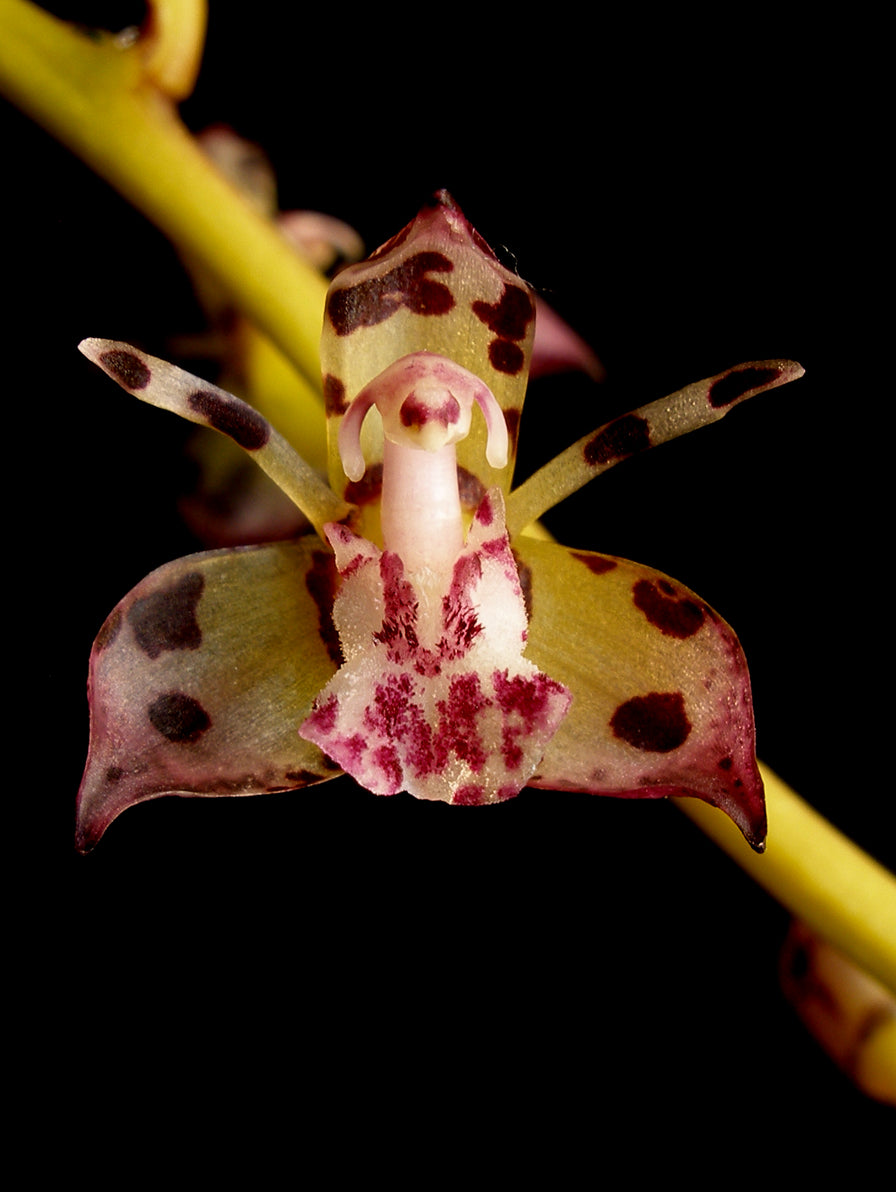
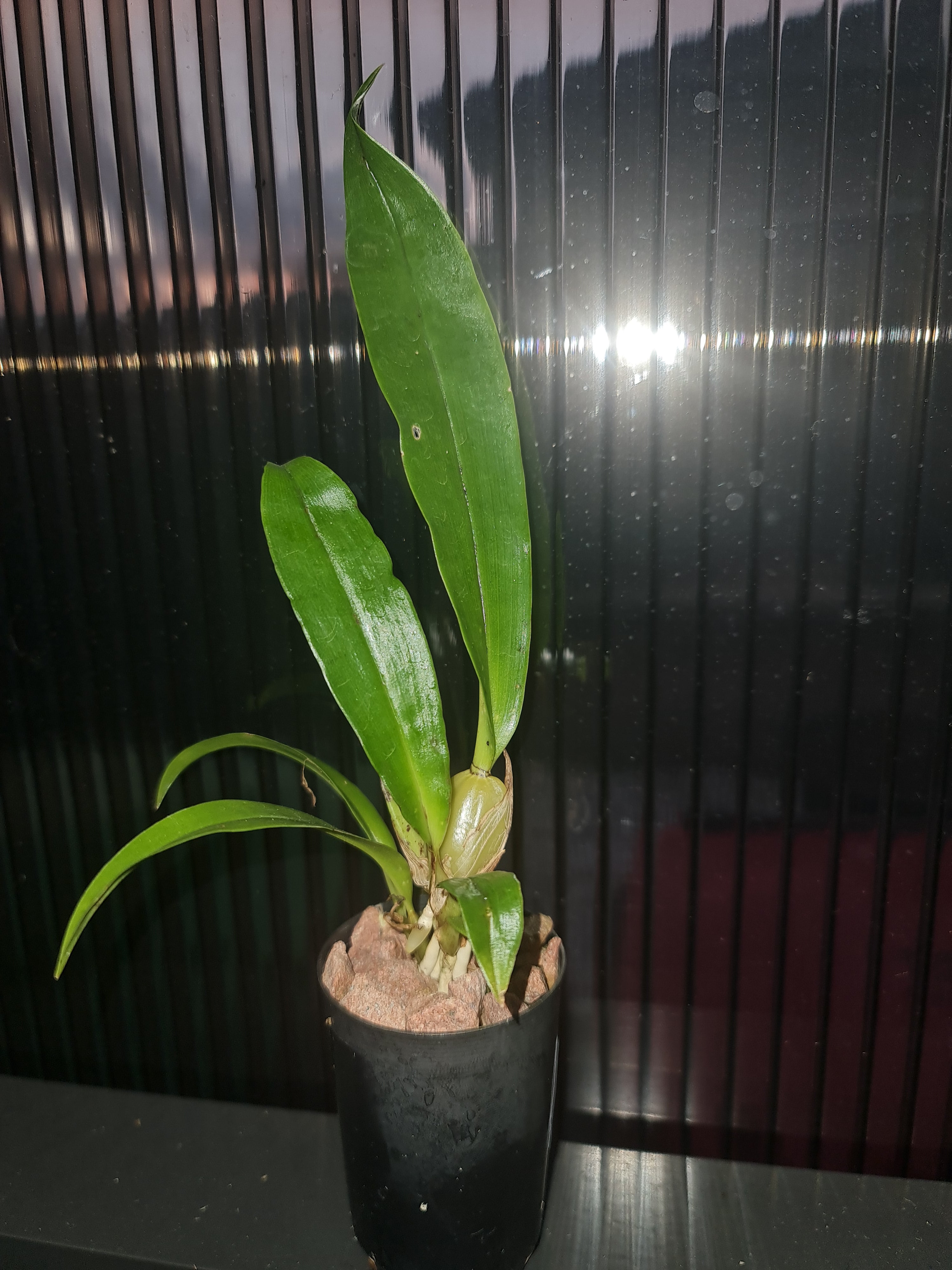
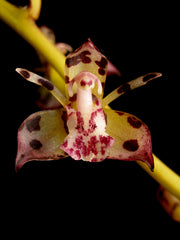
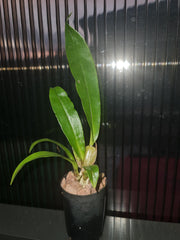
Description
x.Found from Bangladesh, Myanamar, Thailand, Malayasia, Laos, Vietnam, Borneo, Java, Sumatra and the Philippines in evergreen in semi-deciduous and deciduous dry lowland forests and savana-like woodlands at elevations of sealevel to 1800 meters as a small sized, hot to warm growing epiphyte occuring in lowland and lower montane forests with clustered, ovoid to ellipdsoidal, compressed, unifoliate, deeply sulcate pseudobulbs carrying a single, apical, thinly coriaceous, arcuate, linear-lancelate, to elliptic-obovate, acute leaf with a grooved stalk that blooms on a pendant, laxly 20 to 40 flowered, 6 to 20" [15 to 50 cm] long, slender, flexuous, branching inflorescence arising from the base of the mature, often leafless pseudobulb with small, elliptic-lanceolate floral bracts with short lived, yet successively opening so they last for months, flowers occuring in the early spring as new growths appear. The inflorescence lengthen as the flowers open and new ones arise and the process can take 2 to 3 months. The cute, insect-like flowers are slightly scented and are incredibly intricate if viewed with a magnifying glass. Water copiuosly and fertilize often as the new growths arise and grow but as they mature in late summer and early fall it is best to slowly decrease the water and fertilizer until none is given for a month towards the end of the winter. During this time the leaves will yellow and fall, do not worry they are meant to do this but in nature you can often find it with leaves even as it is blooming.
Healthy seedlings for sale is growing in 50 mm tube.
Shipping & Return
xShipping
We ship orders to addresses in NSW, VIC, ACT, QLD, SA. We can ship orchid flasks to all states and territories in Australia. We do not provide international shipping. Note that we may be able to organise concierge service to ship plants to restricted states at an additional cost. Please contact us to find out if this an option available for you.
When you place an order, we will estimate shipping and delivery dates for you based on the availability of your items and the shipping options you choose. Depending on the shipping provider, shipping date estimates may appear on the shipping quotes page.
Please also note that the shipping rates for items we sell are weight-based. To reflect the policies of the shipping companies we use, all weights will be rounded up.
All orders are shipped on Monday and/or Tuesday to avoid the parcel from getting held in a depot on the weekend. All orders placed by 11:59PM FRIDAY will be dispatched on Monday and/or Tuesday, remaining orders will be dispatched the following week.
General Growing Tips & Tricks
xGeneral Growing Tips
| Light | The amount of light required by each orchid varies. This can be researched based on the species. However, as a general rule, never expose orchids to direct sunlight as this can burn the plant tissue. |
| Temperature | The temperature requirement varies based on whether the orchid is cool, warm or intermediate growing. However, most orchids grow comfortably in 18-22 degrees celsius. |
| Humidity | Most orchids prefer moderate to high humidity. Hence, the relative humidity should be maintained between 60 to 90 percent. |
| Air Circulation |
It is important that plenty or air circulation is provided to prevent diseases. |
| Diseases and Pests | Monitor orchids regularly for signs of disease and pests. If there is any evidence of disease or pests, treat with a suitable agent such as a systemic fungicide for fungal infections or a suitable insecticide for insects. |
| Nutrition | Orchids are slow-growing and require fertiliser to support growth. Ensure that you use a balanced orchid fertiliser regularly during the growth period to encourage faster development. |
| Dormancy |
Some orchid species such as catasetums and dendrobiums are deciduous, meaning they drop their leaves and rest in winter. Reduce watering and cease fertilising in this period. |
| Repotting | It is encouraged that you repot orchids only when the plant is outgrowing the pot. An orchid needs to be repotted when roots start growing outside of the pot vigorously and the pot swells or cracks. Only use a pot that is one size larger than the previous pot. Do not repot seedlings immediately upon receiving them as this can slow down growth and may cause transplant shock. When repotting, choose a pot with drainage holes so that water does not pool and cause root rot. |
If you have any questions or concerns about these growing tips, feel free to contact us. We love to help!
- Choosing a selection results in a full page refresh.




